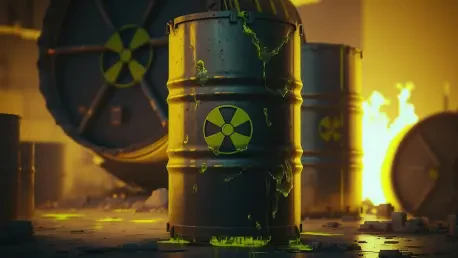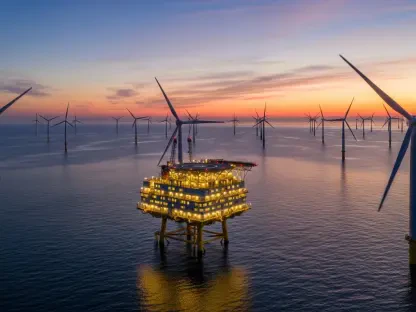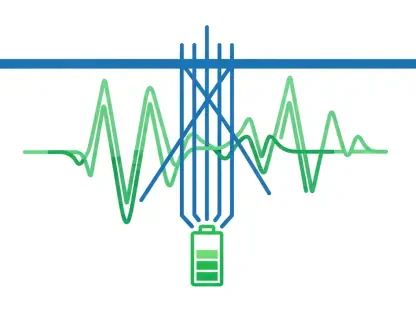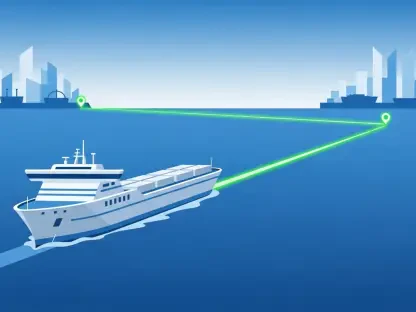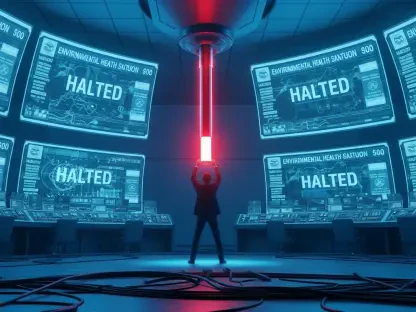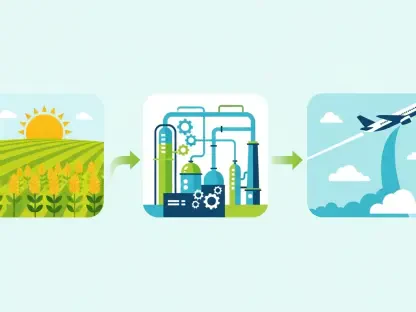Imagine a state long known for its vast coal reserves and sweeping natural gas fields now standing at the precipice of a new energy frontier—nuclear power, with Wyoming, often dubbed the energy capital of the nation, facing a pivotal moment as it grapples with the complexities of integrating nuclear technology into its storied energy landscape. A recent decision by the Joint Minerals, Business and Economic Development Committee in Casper to table an amendment on spent fuel storage has sparked intense debate, drawing attention to the delicate balance between economic promise and community concerns. This report dives into the unfolding narrative of nuclear energy in Wyoming, exploring the challenges, opportunities, and regulatory intricacies shaping this critical industry.
Overview of Nuclear Energy and Spent Fuel Storage in Wyoming
Wyoming’s energy sector has historically been anchored by coal and natural gas, but the emergence of nuclear power signals a potential shift in the state’s energy identity. While nuclear facilities are not yet operational here, interest from innovative companies and federal backing has positioned Wyoming as a candidate for pioneering projects. The focus on nuclear energy brings with it a pressing issue: the storage of spent fuel, a byproduct of nuclear reactions that remains hazardous for thousands of years and requires stringent handling protocols.
A key player in this evolving landscape is Radiant, a California-based company proposing a microreactor manufacturing facility in Natrona County. This development hinges on resolving the spent fuel storage dilemma, as current state laws prohibit storing such material from out-of-state sources. Spent fuel storage is not merely a technical challenge but a societal one, intersecting with public safety, environmental stewardship, and economic aspirations. Radiant’s proposal to store fuel on-site at its facility has ignited discussions about revising existing restrictions to accommodate this emerging technology.
The broader context of nuclear technology in Wyoming reveals a cautious optimism. State regulations currently impose strict barriers to out-of-state waste, reflecting a protective stance toward local communities. Yet, with advancements in microreactor designs promising enhanced safety and efficiency, there is growing curiosity about nuclear power’s potential to complement Wyoming’s energy mix. This intersection of innovation and regulation sets the stage for a nuanced debate about how the state can embrace progress while safeguarding its residents.
Current Developments in Wyoming’s Nuclear Sector
Key Issues and Community Concerns
At the heart of the nuclear debate in Wyoming lie significant community apprehensions about spent fuel storage. Residents near the proposed site in Bar Nunn have voiced fears of environmental degradation, worrying that leaks or accidents could contaminate soil and water resources. Health risks are another pressing concern, with individuals citing potential exposure to radiation as a threat to family well-being, a sentiment echoed during public testimonies at the recent committee meeting in Casper.
Tribal communities, particularly members of the Northern Arapaho Tribe, have added a historical dimension to the opposition. Past experiences with uranium mining have left a legacy of health issues, including cancer, and environmental damage, fueling distrust toward new nuclear initiatives. These groups, alongside nearby towns like Midwest, argue that the risks outweigh any benefits, emphasizing the need to protect cultural and natural heritage from further harm.
Transportation logistics also loom large in public discourse. The prospect of moving spent fuel or microreactors across Wyoming’s highways raises questions about infrastructure strain and accident preparedness. Community members have expressed skepticism about safety assurances, highlighting a divide between technical promises and lived realities. This blend of environmental, health, and logistical concerns underscores a broader public hesitancy, even as some acknowledge nuclear energy’s innovative potential.
Economic Potential and Market Drivers
Proponents of nuclear development in Wyoming paint a different picture, focusing on the economic windfalls that could accompany such projects. Local officials and industry advocates argue that facilities like Radiant’s could generate substantial job opportunities, from construction roles to long-term positions in operations and maintenance. These prospects are seen as a lifeline for communities seeking economic diversification amid declining traditional energy sectors.
Wyoming’s reputation as an energy leader adds weight to the argument for nuclear integration. Supporters contend that embracing nuclear power could solidify the state’s role in national energy innovation, especially with federal policies increasingly favoring cleaner alternatives. Projections suggest that nuclear energy could see significant growth over the next decade, driven by national trends toward decarbonization and federal incentives for advanced reactor technologies.
Beyond immediate economic gains, there is a vision of long-term resilience. By diversifying its energy portfolio, Wyoming could hedge against volatility in fossil fuel markets, positioning itself as a hub for cutting-edge energy solutions. This potential, backed by testimonials from industry experts at the Casper meeting, frames nuclear power as a strategic asset, provided community concerns can be adequately addressed.
Challenges Facing Nuclear Spent Fuel Storage
The path to implementing spent fuel storage in Wyoming is fraught with obstacles, starting with staunch community opposition. Many residents near proposed sites remain unconvinced by safety assurances, viewing the storage of radioactive material as an unacceptable risk to their livelihoods. This resistance is compounded by historical grievances, particularly among tribal populations wary of repeating past environmental injustices.
A glaring systemic challenge is the absence of a national repository for spent nuclear fuel. Without a permanent federal solution, states like Wyoming face the prospect of indefinite on-site storage, amplifying local fears of becoming a de facto waste dump. This uncertainty also complicates transportation plans, as the lack of a final destination raises questions about the safety and feasibility of moving hazardous materials across long distances.
Potential solutions include bolstering public engagement through transparent industrial siting processes, allowing communities to voice concerns and influence outcomes. Collaboration with federal agencies to expedite a national repository framework could also alleviate some pressures, though such efforts remain complex and politically charged. Balancing these risks with the benefits of nuclear energy requires a delicate approach, one that prioritizes dialogue and trust-building over hasty implementation.
Regulatory Landscape and Policy Implications
Wyoming’s current statutes explicitly prohibit the storage of spent nuclear fuel from out-of-state sources, a policy rooted in protecting local interests. The proposed amendment, which would allow on-site storage at facilities like Radiant’s under strict industrial siting and reporting requirements, represents a significant shift. The Joint Minerals Committee’s decision to table this amendment reflects the weight of regulatory caution amid public contention.
State and federal policies intersect in shaping this landscape. Wyoming’s industrial siting mandates demand comprehensive impact assessments, ensuring that projects account for environmental and community effects. At the federal level, recent executive orders from President Trump aim to streamline nuclear reactor approvals, signaling a push for accelerated development. However, these directives also underscore the need for robust backend fuel cycle strategies, a gap that continues to affect state-level planning.
Regulatory uncertainty poses a tangible challenge to industry stakeholders. Without clear guidelines on spent fuel management, companies face risks of non-compliance or public backlash, while communities grapple with distrust in oversight mechanisms. Establishing consistent, transparent policies is essential to fostering confidence and ensuring that safety standards keep pace with technological advancements, a point emphasized during the Casper deliberations.
Future Outlook for Nuclear Energy in Wyoming
Looking ahead, the trajectory of nuclear energy in Wyoming hinges on several dynamic factors. Federal policies promoting nuclear innovation, coupled with advancements in microreactor safety, suggest a promising horizon for projects like Radiant’s shielded designs. These technologies aim to minimize risks through built-in protections, potentially easing some public fears if effectively communicated over the coming years.
Yet, disruptors loom on the horizon. Persistent delays in establishing a national repository could stall state-level progress, leaving Wyoming to navigate temporary storage challenges alone. Evolving environmental regulations may also impose stricter requirements, impacting project timelines and costs. These uncertainties necessitate adaptive strategies from both industry and policymakers to maintain momentum.
Innovation remains a bright spot, with companies like Radiant leading the charge in compact, efficient reactor designs. Economic conditions, including federal funding and market demand for clean energy, will likely play a decisive role in shaping Wyoming’s nuclear future. As public attitudes shift—potentially toward greater acceptance with education and engagement—the state stands at a crossroads, poised to redefine its energy legacy through careful, informed decision-making.
Final Reflections and Path Forward
The Joint Minerals, Business and Economic Development Committee’s choice to delay the amendment on spent fuel storage encapsulated a moment of prudent reflection in Wyoming’s energy journey. The Casper meeting illuminated stark divisions, with heartfelt community concerns about health and environmental risks standing against compelling arguments for economic growth through nuclear innovation. The unresolved issue of a national repository lingered as a central barrier, heightening local apprehensions about long-term storage burdens.
Moving forward, actionable steps emerged as critical to breaking the impasse. Prioritizing transparent dialogue through expanded public forums could bridge gaps between stakeholders, ensuring that resident voices shape outcomes. Engaging expert analysis to assess safety and logistical frameworks offered another avenue for building trust. Finally, advocating for federal collaboration to resolve repository challenges stood out as a linchpin for sustainable progress, providing Wyoming with the clarity needed to make informed choices in its nuclear aspirations.
